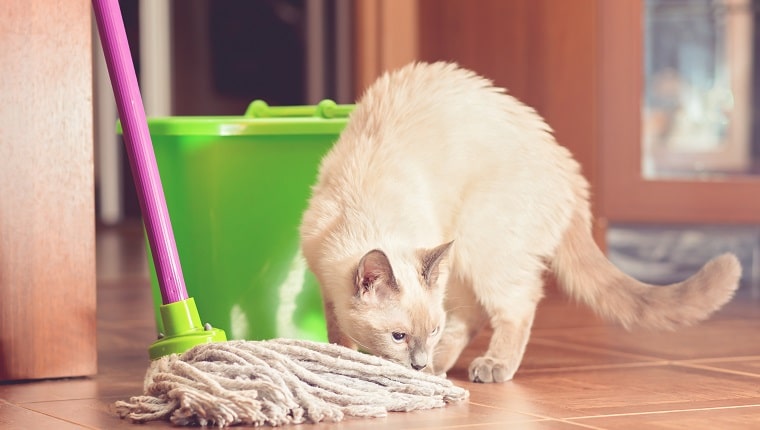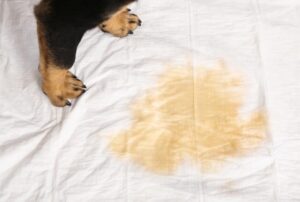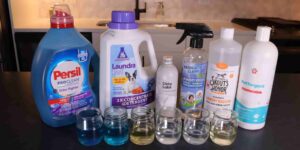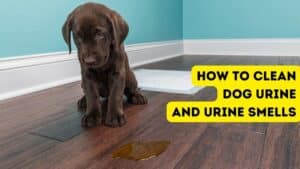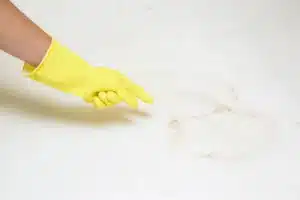Cleaning up after your furry friend can be one of the less glamorous aspects of pet ownership, especially when it comes to cat pee. Whether your cat had an accident outside the litter box or is marking their territory, dealing with the smell and stain can feel overwhelming. But don’t worry—we’ve got you covered! In this friendly guide, we’ll walk you through everything you need to know about how to clean cat pee effectively, so your home stays fresh and clean.
Table of Contents
ToggleWhy Is Cat Pee So Hard to Clean?
Cat urine is notorious for its strong odor and stubborn stains. This is because it contains urea, uric acid, and other compounds that can linger if not cleaned properly. If left untreated, the smell can become ingrained in carpets, furniture, and even walls. Plus, cats have a keen sense of smell, and if they detect their scent in a spot, they might be tempted to pee there again. That’s why it’s crucial to clean cat pee thoroughly and promptly.
Step-by-Step Guide to Cleaning Cat Pee
1. Act Quickly
The sooner you address the accident, the easier it will be to clean. Fresh urine is easier to remove than dried stains. Grab some paper towels or a clean cloth and blot up as much liquid as possible. Avoid rubbing, as this can spread the stain and push it deeper into the material.
2. Use an Enzymatic Cleaner
Enzymatic cleaners are your best friend when it comes to cleaning cat pee. These cleaners contain enzymes that break down the uric acid and other compounds in cat urine, eliminating both the stain and the odor. Simply spray the cleaner on the affected area, let it sit for the recommended time (usually 10–15 minutes), and then blot it up.
Pro Tip: Avoid using ammonia-based cleaners, as they can smell similar to cat urine and may encourage your cat to pee in the same spot again.
3. Rinse and Blot
After using the enzymatic cleaner, rinse the area with cold water to remove any residue. Blot it dry with a clean towel. For carpets or upholstery, you can use a wet vacuum to extract the moisture.
4. Neutralize Odors with Baking Soda
If the smell persists, sprinkle baking soda over the area and let it sit for a few hours (or overnight). Baking soda is a natural deodorizer and can help absorb any lingering odors. Vacuum it up once it’s done its job.
5. Repeat if Necessary
For stubborn stains or odors, you may need to repeat the process. Patience is key—sometimes it takes a few tries to completely eliminate the problem.
Cleaning Cat Pee from Different Surfaces
Carpets and Rugs
- Blot up as much urine as possible.
- Apply an enzymatic cleaner and let it sit.
- Rinse with cold water and blot dry.
- Use baking soda to neutralize odors.
Hardwood or Tile Floors
- Wipe up the urine with a damp cloth.
- Clean the area with a mixture of water and mild dish soap.
- Rinse with clean water and dry thoroughly.
- Use an enzymatic cleaner to ensure the odor is gone.
Furniture and Upholstery
- Blot the stain with a clean cloth.
- Apply an enzymatic cleaner and let it sit.
- Rinse with a damp cloth and blot dry.
- Use a fabric-safe odor neutralizer if needed.
Mattresses
- Remove bedding and blot the stain.
- Apply an enzymatic cleaner and let it soak.
- Rinse with a damp cloth and blot dry.
- Sprinkle baking soda and vacuum it up after a few hours.
Preventing Future Accidents
Once you’ve cleaned up the mess, it’s important to address why your cat peed outside the litter box. Common reasons include:
- A dirty litter box
- Stress or anxiety
- Medical issues (like a urinary tract infection)
- Territorial marking
Make sure your cat’s litter box is clean and easily accessible. If the behavior continues, consult your veterinarian to rule out any health problems.
FAQs About Cleaning Cat Pee
1. Can I use vinegar to clean cat pee?
Yes, vinegar can help neutralize odors, but it’s not as effective as an enzymatic cleaner. Mix equal parts white vinegar and water, spray it on the stain, and blot it up. Follow up with an enzymatic cleaner for best results.
2. Will bleach remove cat urine stains?
Bleach is not recommended for cleaning cat pee. It can react with the ammonia in urine, creating toxic fumes. Plus, it won’t eliminate the odor and may damage surfaces.
3. How do I get rid of old cat urine stains?
For old stains, you may need to soak the area with an enzymatic cleaner and let it sit for several hours. Repeat the process as needed until the stain and odor are gone.
4. Why does my house still smell like cat pee after cleaning?
If the smell persists, it’s likely because the urine has seeped into deeper layers of carpet, padding, or furniture. You may need to use a carpet cleaner or consult a professional cleaning service.
5. How can I stop my cat from peeing outside the litter box?
Ensure the litter box is clean, accessible, and in a quiet location. If the behavior continues, consult your vet to rule out medical issues or consider using a pheromone diffuser to reduce stress.
Final Thoughts
Cleaning cat pee doesn’t have to be a nightmare. With the right tools and techniques, you can tackle even the toughest stains and odors. Remember to act quickly, use an enzymatic cleaner, and address the root cause of the accident to prevent future mishaps. Your home—and your nose—will thank you!
Got more questions or tips about cleaning cat pee? Share them in the comments below! We’d love to hear from you. 🐾


